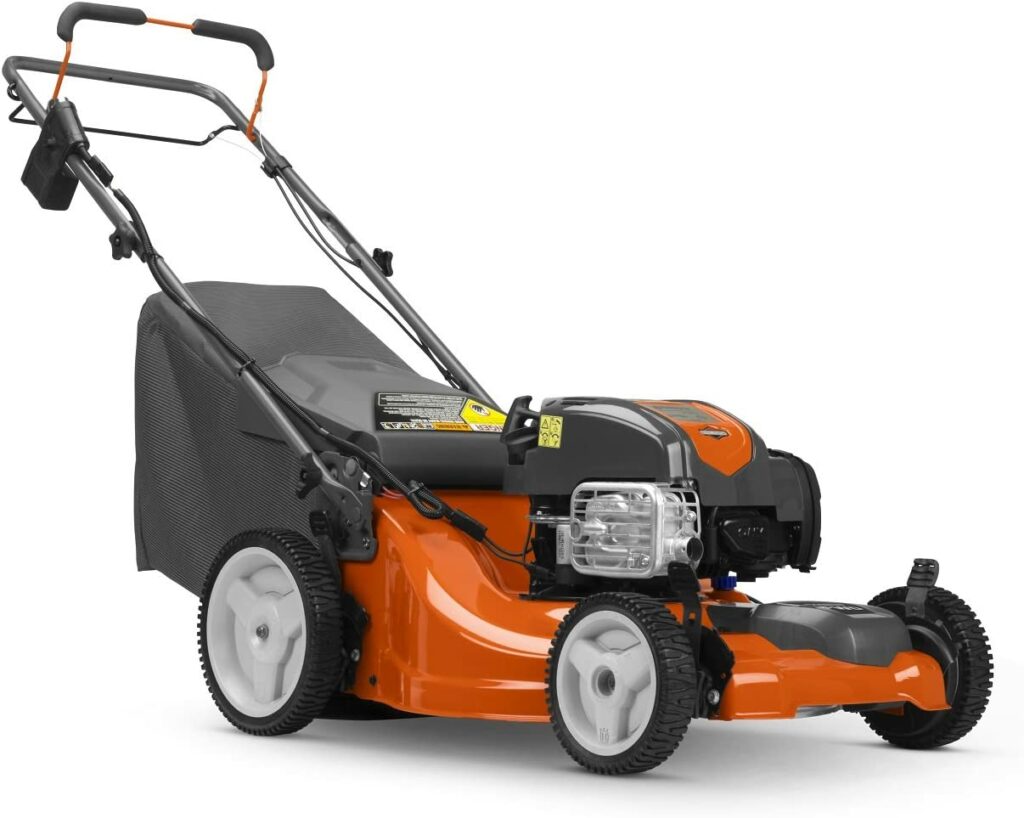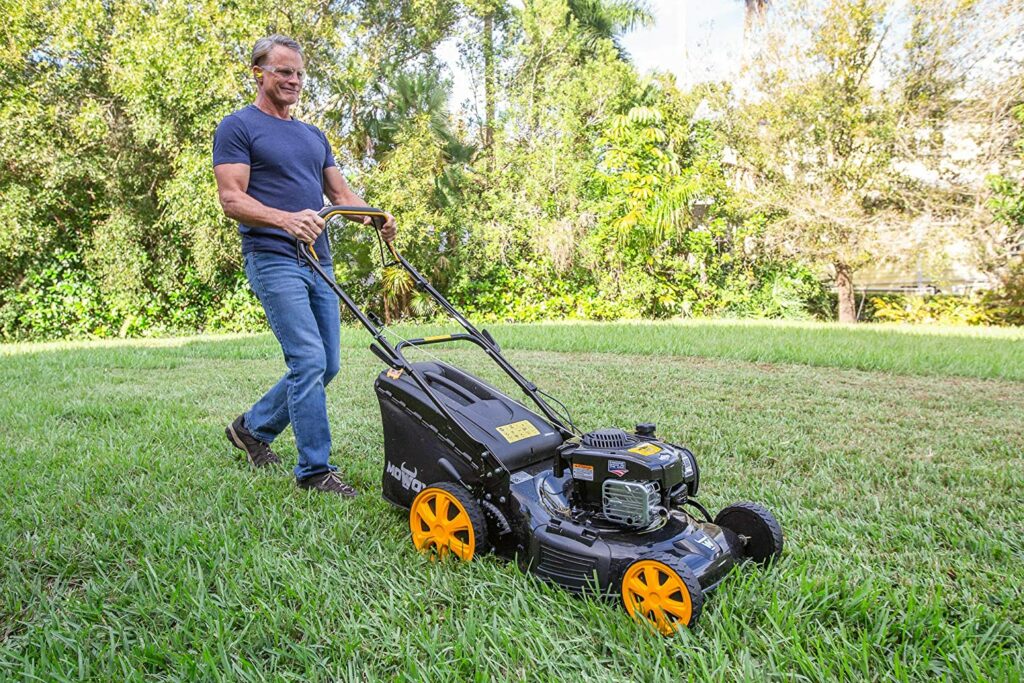The idea of a powerful, self-propelled lawnmower is one tempting investment when it comes to the search for the most powerful, convenient, and high-efficiency lawnmowers.
And with an understanding of all the benefits that come from investing in a self-propelled mower, we wouldn’t blame you if you rushed to buy the first self-propelled lawn mower you heard about.
But that isn’t to say that you are within your rights to invest in one of these lawn care power tools without understanding how it works or what makes it as efficient as advertised.
So, to make sure that you know exactly what you are getting into, this article will help you understand everything you need to know about the self-propelled lawnmowers, specifically, how they work.
Table of Contents
How do self-propelled lawn mowers work?

It is said that you only need to squeeze a certain bar for the mower to start moving and mowing. But is it just that? What exactly happens underneath the mower’s shell?
And most importantly, are you like the rest of us and would like to understand the science and the mechanics behind machinery before you buy that piece of equipment, especially because you own a small or a medium-sized lawn, cannot afford the most powerful riding mowers yet, and because you are tired of the push mowers that leave you drenched in sweat and sometimes sick from the sore muscles?
Well, self-propelled mower might be the best choice for you.
This mower is one of the walk-behind types of lawnmowers.
The other is the traditional push lawnmower which has been used for decades from the 17th century back in 1830, an invention by Edwin Budding, and a great move from the use of scythe for grass cutting, or worse, calling your neighbors to bring by their sheep or goats to mulch on the grass, leaving you with animal scat.
The traditional push mower was in the market for over a century, and it wasn’t until 1921 that the first gasoline-powered lawnmowing motor was developed, but even then, the mowers were too heavy and the process laborious.
So, when some really brilliant minds came up with the idea of a lawnmower that would make lawn care a sweat-free or a less-sweaty process, thanks to the introduction and the use of a drive system that works pretty much like what you see in motor vehicles was introduced, gardeners had all the reasons to rejoice.
This was also the birth of the first self-propelled lawnmowers. A self-propelled lawnmower is a mowing apparatus/ machinery that’s fitted with a drive system that’s activated by use of a squeeze bar or even a bail that’s placed in the mower’s handle.
So, when you squeeze this bar on the handle, the blades start rotating on the self-propelled mower, and the rotary motion of the blades means that the blades will start spinning, and the mower moves forward as a result and on its own, with its own power.
Your only job will be to guide the mower, and you won’t need to use your muscles to mow the lawn.
Releasing your grip on the handlebar will shut off the mower automatically, and the blades will also stop spinning. The handle is, therefore, both an operational and a safety function, and it’s quite the norm in the lawn mowing industry today.
Safety Functions of the Self-Propelled Lawnmower
Note that the safety design of this mower is based on two elements:
First, in case you accidentally slip, losing your footing in the process, the likelihood of the spinning blades getting in contact with your body will be very slim.
Secondly, should you spot a hazard of any kind, you won’t need to stop and think about the location of the shut-off switch because you only need to release the handlebar, and you will be home free and safe.
The best of the self-propelled mowers on the market today sport a highly responsive activation lever which makes it possible for you to turn on or off the mower’s propulsion, instantly, as you navigate the mower.
The other safety feature present in some of the best self-propelled lawnmowers is the manual blade shut off feature.
This function has been incorporated into the lawnmower to give you the option to turn off the spinning of the blades automatically, while the engine still runs, allowing you to easily and safely empty the grass bagger.
In other cases, the blade shut off system is essential because it means that you get to remove debris, branches, or rocks out of your mower’s path, without having to turn off the mower only to restart it in a minute or less.
Lastly, this safety function allows you to move the lawnmower to another part of the lawn, especially if you have to keep mowing to get to that other area.
The secret to a well-manicured lawn is in the blade; here are our favorites
Propulsion of the self-propelled lawnmower
As mentioned above, the self-propelled mower was developed to mimic the operation of the car’s drive system. What this means is that as the drive shaft in a car, this mower has a drive shaft connecting the motor to the wheels of the motor.
When the drive shaft is engaged by the squeezing of the handlebar, the self-propel function of the mower kicks in, and as a result, part of the engine power that drives the mower will be directed into turning the mower’s wheels (two or all the four wheels for more powerful/ heavy-duty mowers.
The rest of the power goes into powering and spinning the blades. Generally, you can control the mowing speed of the mower to match your walking speed, but if you want to put in some workout time, you could speed it up a little for that brisk walk.
But be sure that the speed is manageable and friendly.
Types of Self-Propelled Lawnmowers

These mowers will differ depending on the function of the mower, the operation of the wheels, and the source of power.
Wheel Drive System
These self-propelled lawnmowers feature either a front or a back wheel drive, but there are some self-propelled lawnmowers with an all-wheel-drive or AWD.
Working with the AWDs means that that the power of the mower is distributed to all the front and the rear wheels, meaning that the mower will punch more power, making it easy for the mower to work on uneven and rough terrains, including slopes and other hilly areas.
In these AWD self-propelled mowers, the front-wheel-drive gives the mower it’s the high level of maneuverability, which means that tipping off the front wheels from the ground allows for easy turns with the mower in the direction of the front wheels.
The maneuverability and the easy control functions of this mower also make this kind of mower the ideal option for mowing lawn spanning over a flat area.
Power Source
While most of the self-propelled lawnmowers are gas-powered, there are few electric and cordless self-propelled lawnmowers. Gas or electric powered, these mowers will move forward once the handlebar is squeezed, and you’d only need to direct/ guide the mower, allowing it to easily move over large areas of grass, whether the lawn is on a flat area or if you are mowing uphill.
These mowers are also fast, meaning that mowing the lawn will take considerably less time. It’s also worth noting that these self-propelled lawnmowers might operate either on a single speed that’s calibrated to match your mowing/ average walking pace, depending on the existing lawn conditions. But there also variable-speed lawnmowers.
Benefits of Self-Propelled Lawnmowers
It’s safe
Cordless and battery-powered or gas-powered, the lawnmower keeps you safe in many ways, including the fact that you will be able to gain forward or back the momentum of the mower very fast, and since you won’t need to push it to control its movement, this mower is fairly safe.
The other safety features include the advanced auto-shutoff function that will turn off the blades while the engine still runs, keeping you safe as you change direction, move to a different area, or if you need to remove boulders and other obstructions from the mower’s path.
It’s time-saving

The self-propulsion design of the mower means that it will move back and forth easily, and the likelihood of having to turn around because some swaths of grass are uncut is very slim. The other timesaving feature is the high and often variable operation speed of the mower.
And since the mower turns instantly once you guide it, you won’t be wasting time on the lawn. Also, the blades are very sharp, and their spinning action means fast and superior cuts.
Finally, you might like these mowers because you have total control over its function and direction.
The mower depends on your guide from the handle to move forward or backward. And if your self-propelled lawnmower is the lightweight option, you won’t have to worry about wheel marks left out on the lawn.
Bear in mind that the robotic and the hovercraft mowers are fashioned after the self-propelled drive systems, but with more advanced technological features.

